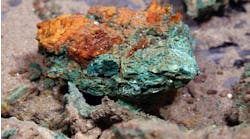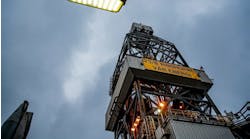Offshore staff
OSLO, Norway — Seventeen exploration wells were drilled across the Norwegian Continental Shelf in the first half of the year, according to the Norwegian Petroleum Directorate’s (NPD) latest review of offshore activity.
Fourteen of the wells were wildcats, with six bringing discoveries. Two were close to the Equinor-operated Johan Castberg development in the Barents Sea, with volumes from these and other undeveloped finds at the area estimated at close to 280 MMbbl.
“These are important additional resources that will help increase value creation and extend the life of Johan Castberg,” said Torgeir Stordal, NPD interim director general.
A further 35 to 40 exploration wells should be drilled offshore Norway during the second half of 2022, similar to last year. Most will be close to infrastructure, but some will be drilled in more frontier areas, with others designed to test unconfirmed plays.
Production and deliveries of Norwegian gas have been at very high levels, with 60.83 Bcm produced across the shelf during the first half of the year.
Actions taken on certain fields could lead to further increases, with some companies given the go-ahead to sell gas that would otherwise have been reinjected. A larger share of liquids production was also sold as pipeline gas.
During the first quarter, the authorities received development plans (PDOs) from Equinor for the Halten Øst project in the Norwegian Sea and from ConocoPhillips for Eldfisk in the North Sea (amended plan). Other PDOs should be submitted during the course of second-half 2022.
Two PDOs already approved this year are Aker BP’s development in the Alvheim area of the North Sea and Phase 1 of Equinor’s Kristin Sør in the Norwegian Sea.
Among other highlights, the production license for Ekofisk in the southern Norwegian North Sea, has been extended from 2028 to 2048. Adoption of pioneering water-based injection methods has been a big factor in the life extension (the field began producing in 1971) and, according to the NPD, there could be opportunities for reopening non-producing fields in the area and further exploration around Ekofisk.
CO2 storage
The Norwegian authorities have awarded exploration licenses this year for storing CO2, one in the North Sea and one in the Barents Sea. And three companies have submitted applications for CO2 storage acreage in the North Sea.
“We’re experiencing increasing interest in acreage for storing CO2,” Stordal said. “This indicates that more players are seeing opportunities for future value chains within capture, transport and storage of CO2.”
07.22.2022



